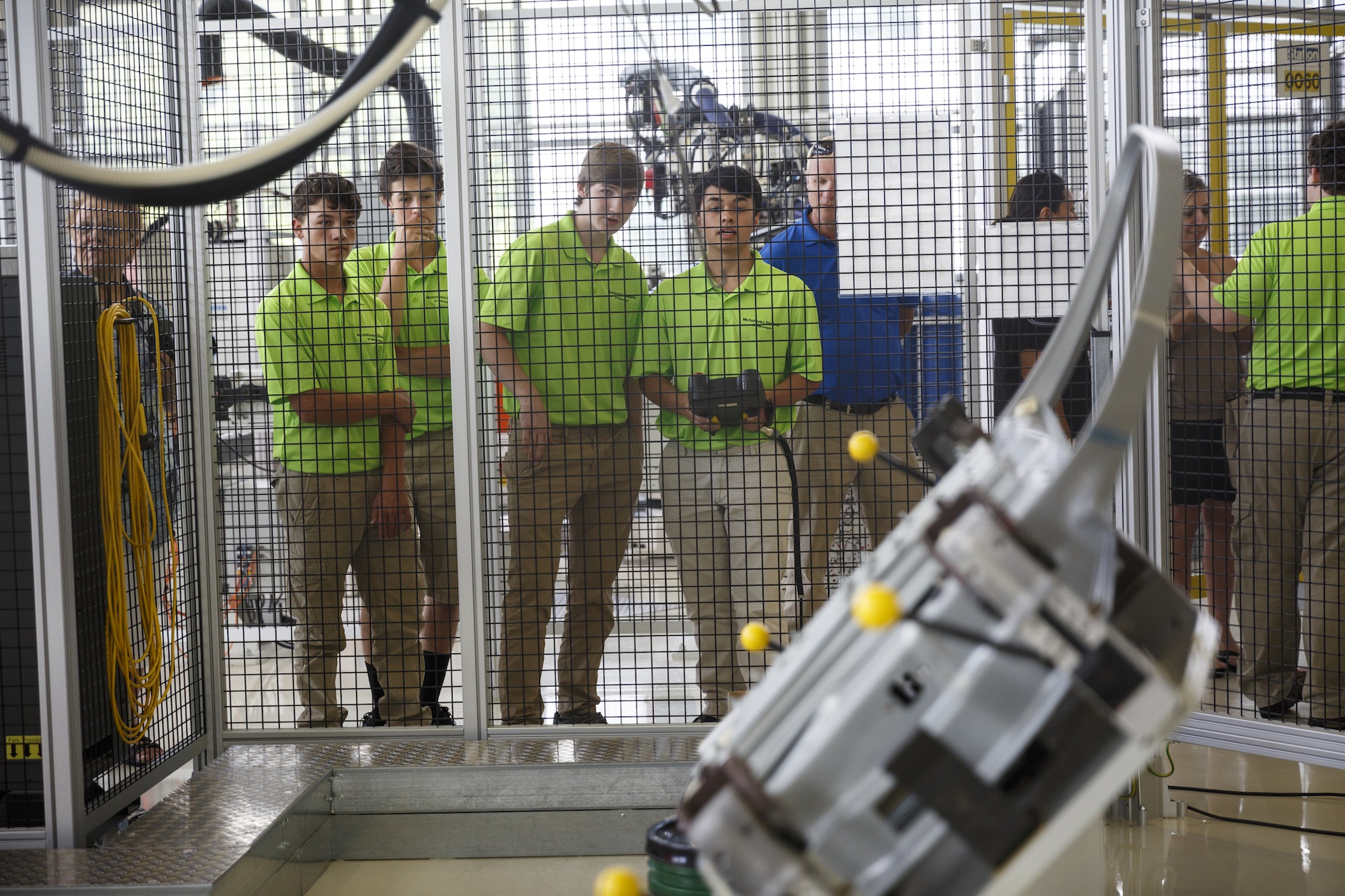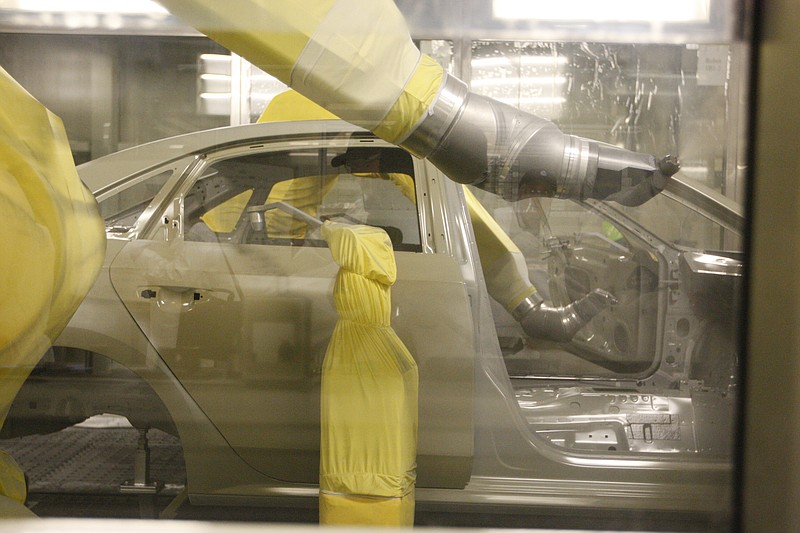 Mechatronics students watch as a training robot is operated at the Volkswagen manufacturing plant on Thursday, June 16, 2016, in Chattanooga, Tenn. This fall, 27 Hamilton County high school juniors will enroll in Volkswagen's new Mechatronics Akademie where they will spend 2 years learning how to run and maintain industrial robots.
Mechatronics students watch as a training robot is operated at the Volkswagen manufacturing plant on Thursday, June 16, 2016, in Chattanooga, Tenn. This fall, 27 Hamilton County high school juniors will enroll in Volkswagen's new Mechatronics Akademie where they will spend 2 years learning how to run and maintain industrial robots.More Info
Fastest growing states for industrial robots1. Tennessee, 23 percent annual growth from 2010 to 2015 to 10,9442. Georgia, 23 percent annual growth from 2010 to 2015 to 5,6213. Kentucky, 22 percent annual growth from 2010 to 2015 to 9,5234. Alabama, 22 percent annual growth from 2010 to 2015 to 7,6925. Missouri, 22 percent annual growth from 2010 to 2015 to 5,352Top states for industrial robots1. Michigan, 27,8322. Ohio, 20,4153. Indiana, 19,4514. California, 17,8445. Texas, 13,224Source Brookings Institute analysis of Moody’s Analytics data
As VW Passats and Atlas SUVs move through the paint shops at Volkswagen's assembly plant in Chattanooga, most of the paint application is done by robots and automated spray guns along an "E-Shuttle" conveyor system that rotates the cars in phosphate and electro deposition baths that limit demand for chemicals, water, energy - and many workers.
VW's paint shop was one of the first of its kind when it was built in 2010, but it is typical of the increasingly robotized automobile production in the United States.
A study by the Brookings Institute's Metropolitan Policy Program found that 49.5 percent of all industrial robots in America are in the automotive industry, and the newest auto plants in the country, including VW, Nissan and General Motors assembly plants in Tennessee, are some of the most robotic in the country.
"A huge component of the work in auto assembly plants is repetitive, potentially dangerous and often involves heavy equipment but requires great precision," says Mark Muro, senior fellow and policy director for the Metropolitan Policy Program at the Brookings Institute. "Painting, welding and assembly lends itself well to the use of industrial robots, so we see about half of all industrial robots in America in the auto industry."
As a result, the top states for the use of industrial robots are in the biggest auto producing states in the Midwest, including Michigan, Ohio and Indiana.
But Tennessee, as one of the fastest-growing states for auto production, had the fastest growth of any state in the rate of increase in industrial robots from 2010 to 2015, growing at a 23 percent annual rate during the 5-year period.
The study found that the number of industrial robots in metropolitan Chattanooga nearly tripled in five years. Chattanooga had 2.8 robots per thousand workers in 2015, according to the Brookings' analysis of data compiled by Global Robotics Production Association.
The robot association uses a narrow definition of an industrial robot as "a fully autonomous machine that does not need a human operator and can be programmed to perform multiple manual tasks." It does not include warehouse or distribution robots.
Counting robotic equipment in a broader definition shows an even far higher number of such machines. For example, VW has 850 robots in its Chattanooga body shop alone, company spokesman Scott Wilson said.
"I think we're in the midst of a sea change, and I expect we'll see continued adoption of robots as their prices come down, especially in a whole variety of other industries," Muro said. "This is really the future of 21st century advanced manufacturing."
The fastest growth in industrial robots is coming in the South where a rising share of U.S. auto production is occurring as foreign-based auto makers such as Nissan, Toyota, Volkswagen, Mercedes-Benz and BMW locate new assembly plants across the region.
The industrial robots increase productivity as well as the demand for software programmers and mechatronics-trained workers. But robots also cut the need for workers performing basic manual tasks.
"To some, the displacement of work previously done by humans is disconcerting, but the growth in the use of industrial robots is key to the productivity of today's manufacturing, and Tennessee has been at the forefront of that change," Muro says.
Muro said he believes that without the efficiencies provided by modern robotic assembly lines, American manufacturing would be declining and more U.S. factory workers could lose their jobs as businesses move manual tasks to low-cost, Third World nations.
A survey of U.S. workers by Randstad Employer Brand Research this year found that only 14 percent of the workers responding to the poll thought automation would replace them on the job. But 76 percent of the respondents said they would upgrade their skills or undergo training to operate the new machines, and 30 percent of those surveyed said they thought robots would make their jobs easier.
Randstad found that 51 percent of employers surveyed said the would be "happy to retrain" workers for new automated jobs.
"These industrial robots are allowing some 'reshoring' of production to the U.S., which would otherwise be done offshore," Muro says.
